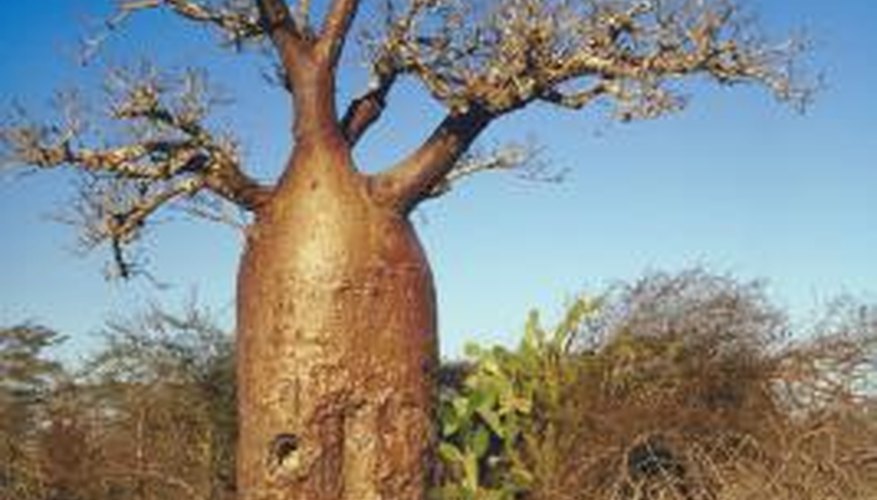The baobab tree is the iconic tree of the African Sahara. It is readily recognised by its enormous trunk and, by comparison, scrawny stems and twigs. It is the source of many legends among the tribes of the area, and is also a rich source of traditional medicine. In a land where rainfall is limited and it is rare to find even tiny bushes, the gigantic baobab tree thrives. It is able to do so due to a number of unique adaptations that it has perfected over the course of its evolution.
Slick and Shiny
Besides it height and girth, the baobab is also distinct due to its shiny and slick outer bark. This unique adaptation allows the baobab tree to reflect light and heat, keeping it cool in the intense savannah sun. The slippery skin is also useful in keeping monkeys, elephants and other small herbivores from climbing it and eating its tender leaves and flowers. It is also believed that the reflective nature of the bark may aid in protecting the tree from the effects of wildfires.
- Besides it height and girth, the baobab is also distinct due to its shiny and slick outer bark.
- This unique adaptation allows the baobab tree to reflect light and heat, keeping it cool in the intense savannah sun.
Spongy Nature
Another adaptation that the baobab tree has developed to help it conserve water is a spongy bark. The bark of the baobab is more porous than regular wood, making it able to absorb moisture like a sponge. This allows the tree to absorb as much water as possible in times of rain and store it for use during times of scarcity or drought.
Stinky Flowers
The baobab tree blooms pretty white flowers. However, get too close and you are in for a surprise -- the flowers of the baobab emit a stinky smell, a smell that resembles rotting meat. This unique adaptation helps the baobab to reproduce effectively by attracting its main pollinator, the fruit bat. Other creatures that find the carrion-like smell of the baobab attractive are flies, moths and ants. All of these creatures help to spread the pollen of the baobab from tree to tree, allowing it to spread quickly throughout the African savannah.
- The baobab tree blooms pretty white flowers.
- Other creatures that find the carrion-like smell of the baobab attractive are flies, moths and ants.
Rainwater Collection
The baobab tree has adapted its stems to catch every bit of water it can, from morning dew to summer downpours. Its stems form "u" like funnels, allowing water to channel into holding canals so the plant has time to soak it all in over the course of a day. Insects, birds and humans find this adaptation useful as well, especially when water is scarce.
